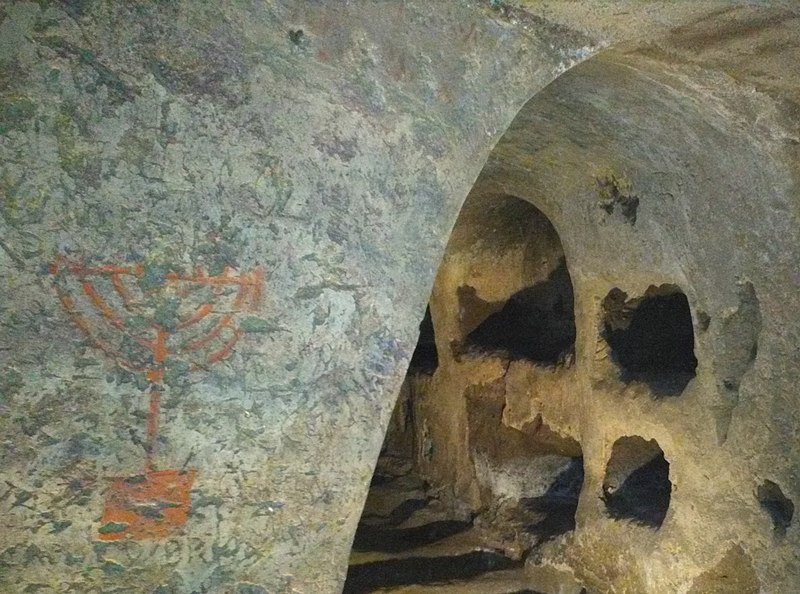The Jewish presence in Venosa dates back to Roman times. Hebrew inscriptions have been found on site probably dating from the 3rd century. Funeral inscriptions present in Jewish catacombs have been discovered over time by archeological endeavors. These finds so far attest to 75 inscriptions present, but access to the catacombs has been complicated for a long time.

In particular at such sites to be seen in Venosa, there is a fresco adorning an arcosolium showing a menorah in the center which is surrounded by different religious elements such as an etrog, a lulav, a vial of oil and a shofar.
The chronicles of Ahimaaz ben Paltiel evoke the presence of an emissary from Jerusalem present in the 11th century in Venosa, land of numerous encounters and cultural exchanges. There, he met the Talmudist and poet Silano. Following the conquest of the Normans in 1041, Venosa lost its status as a center of Jewish studies.
In 2007, the Jewish catacombs of Venosa were opened to the public after major works were carried out. An official ceremony with local and regional authorities, as well as a conference at Pirro del Balzo Castle accompanied this event. Additional restoration work was carried out in the catacombs of Venosa in the early 2020s.